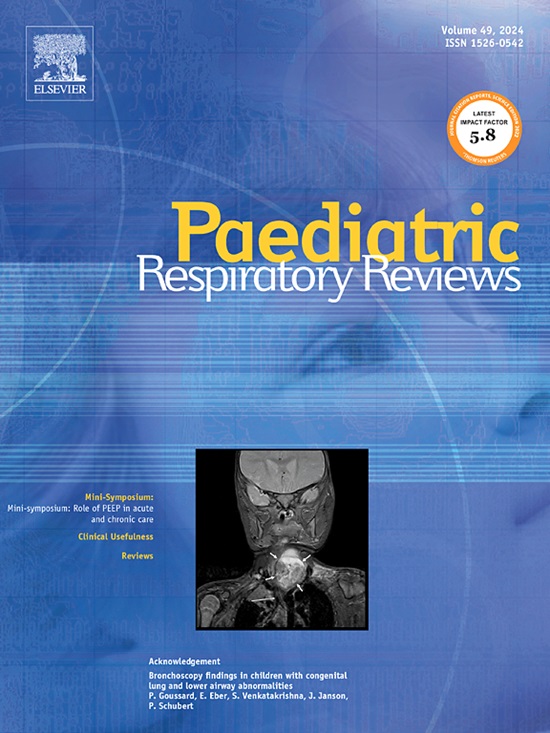Unintended impacts of COVID-19 on the epidemiology and burden of paediatric respiratory infections
IF 4
3区 医学
Q1 PEDIATRICS
引用次数: 0
Abstract
Acute respiratory infections (ARI), especially lower respiratory infections (LRI), are a leading cause of childhood morbidity and mortality globally. Non-pharmaceutical interventions (NPI) employed during the COVID-19 pandemic have impacted on the epidemiology and burden of paediatric ARI, although accurately describing the full nature of the impact is challenging. For most ARI pathogens, a reduction was observed in the early phase of the pandemic, correlating with the most stringent NPI. In later phases of the pandemic resurgence of disease was observed as NPI eased. This pattern was most striking for seasonal viruses, such as influenza and respiratory syncytial virus. The impact on ARI-associated bacterial disease varied; marked reductions in invasive Streptococcus pneumoniae and Streptococcus pyogenes were observed, followed by a resurgence that correlated with increases in respiratory viral infections. For Corynebacterium diphtheriae, Bordetella pertussis, and Mycoplasma pneumoniae, a sustained reduction of disease was observed well into 2022 in most regions. Proposed mechanisms for the varied epidemiological disruption amongst ARI pathogens include differential effects of NPI on specific pathogens, population-level immunological effects, and ecological and genetic pathogen adaptations. Additionally, important indirect effects of pandemic restrictions on paediatric respiratory infections have been identified. These occurred as a result of disruptions to routine health services, reductions in vaccination coverage, and disruptions to respiratory infection research and surveillance activities. Impacts have been disproportionately borne by those in low resource settings. We discuss opportunities to leverage pandemic learnings to support improved understanding of the epidemiology of paediatric respiratory infections to inform future prevention and health system strengthening.
COVID-19对儿科呼吸道感染流行病学和负担的意外影响
急性呼吸道感染(ARI),特别是下呼吸道感染(LRI),是全球儿童发病和死亡的主要原因。在2019冠状病毒病大流行期间采用的非药物干预措施(NPI)对儿科急性呼吸道感染的流行病学和负担产生了影响,尽管准确描述这种影响的全部性质具有挑战性。对于大多数急性呼吸道感染病原体,在大流行的早期阶段观察到减少,这与最严格的国家预防措施有关。在大流行的后期阶段,随着新感染的缓解,观察到疾病再次出现。这种模式对季节性病毒最为显著,如流感病毒和呼吸道合胞病毒。对ari相关细菌性疾病的影响各不相同;观察到侵袭性肺炎链球菌和化脓性链球菌的显著减少,随后与呼吸道病毒感染增加相关的复苏。在大多数地区,白喉棒状杆菌、百日咳博德泰拉和肺炎支原体的发病率持续下降,直至2022年。ARI病原体之间不同的流行病学破坏机制包括NPI对特定病原体的不同影响、群体水平的免疫效应以及生态和遗传病原体适应。此外,已经确定了大流行限制对儿童呼吸道感染的重要间接影响。这是由于常规卫生服务中断、疫苗接种覆盖率下降以及呼吸道感染研究和监测活动中断造成的。资源匮乏地区的人承受的影响不成比例。我们讨论了利用大流行的学习来支持提高对儿科呼吸道感染流行病学的理解的机会,为未来的预防和卫生系统加强提供信息。
本文章由计算机程序翻译,如有差异,请以英文原文为准。
求助全文
约1分钟内获得全文
求助全文
来源期刊

Paediatric Respiratory Reviews
医学-呼吸系统
CiteScore
12.50
自引率
0.00%
发文量
40
审稿时长
23 days
期刊介绍:
Paediatric Respiratory Reviews offers authors the opportunity to submit their own editorials, educational reviews and short communications on topics relevant to paediatric respiratory medicine. These peer reviewed contributions will complement the commissioned reviews which will continue to form an integral part of the journal.
Subjects covered include:
• Epidemiology
• Immunology and cell biology
• Physiology
• Occupational disorders
• The role of allergens and pollutants
A particular emphasis is given to the recommendation of "best practice" for primary care physicians and paediatricians.
Paediatric Respiratory Reviews is aimed at general paediatricians but it should also be read by specialist paediatric physicians and nurses, respiratory physicians and general practitioners.
It is a journal for those who are busy and do not have time to read systematically through literature, but who need to stay up to date in the field of paediatric respiratory and sleep medicine.
 求助内容:
求助内容: 应助结果提醒方式:
应助结果提醒方式:


